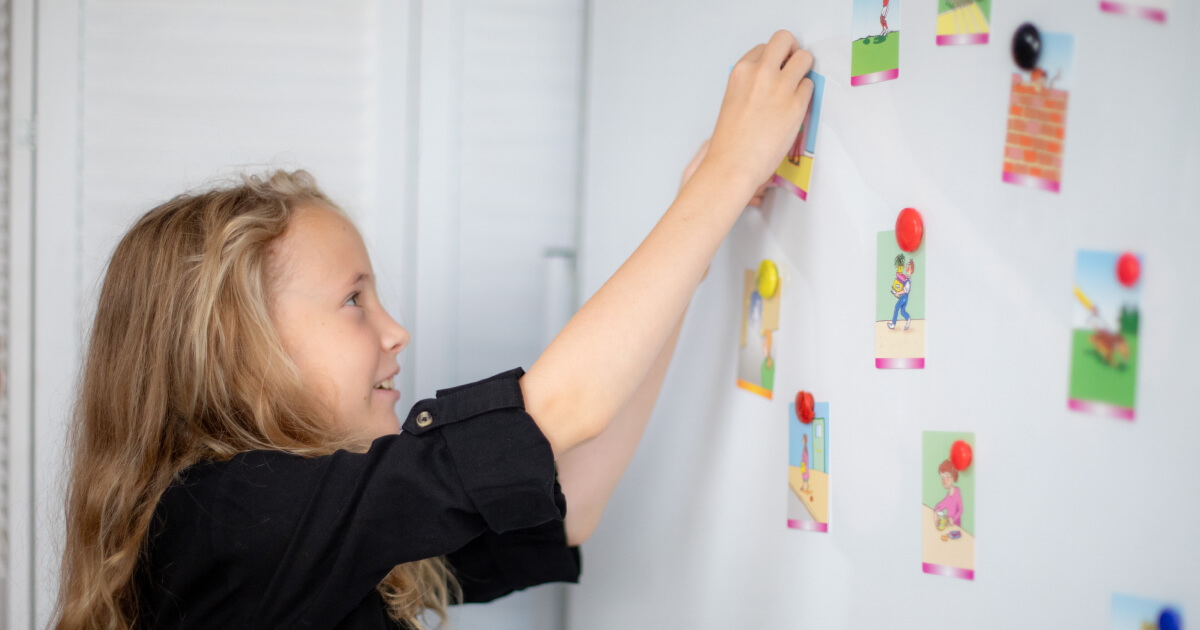Topics for communication in English with young learners
- Speaking
- Teaching qualifications
- Activities
- Tips & Strategies
- Methodology

20.12.2023
Feedback is an integral part of the educational process. When learning something new, we all need to know if we are doing something right and how it can be improved. Therefore, feedback in language learning is essential for students` progress and enhancing future performance. To learn more about it, let's explore the most important aspects:
Give the feedback on writing right!
Feedback is the information, either immediate or delayed, that learners get on their performance.
Scott Thornbury (An A-Z of ELT, p. 79)
One of the most commonly used types of feedback is correction, which can be either positive or negative. For example, if a student gives a correct answer to the question and you respond “That's right”, it is positive feedback.
So even if you don`t know much about giving feedback at this stage, you`ve already used some of it in your class.
However, there are other types of feedback that a teacher should know about.

When a student makes a mistake and you state why this is wrong by explaining the correct way to use the language, you use explicit feedback.
For example:
Student: I do my homework yesterday.
Teacher: That's wrong. We say “I did my homework yesterday”. “Did” is the past form of “do”.
Implicit feedback will be used in a way of repeating a student`s response with errors but in the correct form.
For example:
Student: I do my homework yesterday.
Teacher: You did your homework yesterday, right?
What is validity of the test?
Immediate feedback is used to provide students with answers or corrections right after they have completed a task, while delayed feedback is not given after students' performance and can be put off until the end of the lesson or even later.
For instance:
| Immediate feedback | Delayed feedback |
Student: I leave in Kyiv (“live” is pronounced with /i:/ instead of /ɪ/). Teacher: Do you mean “live”? (with short /ɪ/) | A teacher provides students with feedback on their performance in written assignments after it has been evaluated. |

Feedback on language involves correcting any errors that are connected with the use of language (e.g., grammar, vocabulary, pronunciation).
It focuses mainly on accuracy and helps develop students` language proficiency.
To motivate your students, remember to include examples of not only unsuccessful uses of language but successful ones as well.
For example, a teacher writes a few sentences used by the learners during a speaking or writing task on the board and asks them to identify grammatically correct ones. Then, students discuss how the others should be changed and why.
Content feedback on the other hand focuses on the meaning of ideas expressed by the students. It brings a communicative purpose to the tasks and makes learners listen to each other more carefully to achieve a stated goal.
For example, a teacher asks students to find one thing that they have in common with their partner in the topic of abilities. After the discussion, a few of them are asked to report in what ways they are similar to their peers.

Create a positive environment!
Inspire your teen learners with us!Informal feedback is usually spontaneous and happens in the class all the time.
Each time you respond to students' answers or actions during the lesson, you give them a kind of informal feedback.
Formal feedback is usually planned and recorded.
It occurs in assessment tasks, tests, exams, etc.
How to pick the correct type of assessment?
Even though a teacher is the main source of feedback during the learning process, other students in the group can also provide a language learner with some quality feedback.
It's often used in speaking or writing tasks when students need to evaluate each other's work with some criteria. It helps students become better listeners, readers, and collaborators.
However, a teacher should provide students with some peer review guidelines, which will help them give constructive feedback.

Knowing different forms of feedback is as important as understanding when to provide a learner with it.
Giving feedback at the end of a lesson can be helpful because students leave the class knowing that the teacher listened to their ideas and helped them in some areas or highlighted their strengths.
However, immediate feedback can be helpful as well.
It keeps the ideas fresh in students' minds and helps them avoid making the same mistakes over and over in future activities.
To choose the right time for feedback you need to identify the aim of the task/ activity: is it accuracy or fluency?
If the main focus is accuracy, then immediate correction will be the most beneficial to your students. If the main focus is fluency, then you need to consider giving delayed feedback after the activity has finished or even later.
In addition, a teacher should consider the relevance of an error to the aim of your lesson in general.
For example, you have a lesson on conditional sentences, but your student makes a mistake using articles. Does it need immediate feedback or can it be discussed in later stages?
The target language is your main focus, so there is no need to interrupt your students and divert them from the flow of speaking.
What is a delayed error correction?
There are lots of techniques that you can use in your class, but you need to try them out to see which ones are the most effective for your students and each particular situation.
What is wrong with simply pointing out an error?
Even though this way of correcting errors seems to be the simplest, it is not always the best one:
Student: I have 20 years old.
Teacher: That`s wrong. You should say: I am 20 years old.
Memorisation of the right way to use language is simply not useful for the learners. Plus, it’s too easy to slip into a monologue with a lot of explanations.
What you tell me, I forget; what I discover for myself, I remember.
Learning Teaching by Jim Scrivener
So what are other ways of giving feedback on language?

1. Repeat a sentence up to an error:
Student: After school, he have dinner.
Teacher: After school, he …. (a teacher uses rising intonation to show that the student should finish the sentence)
Student: He has dinner.
2. Echo a sentence with an error but using a different intonation or stressing the wrong part:
Student: I like sing.
Teacher: You like SING?
How to deal with errors?
3. Elicit the correct way to say something:
Student: She work as a manager.
Teacher: Do we say “she work”?
Student: She works as a manager.
4. Use finger correction:
Student: I have dog.
A teacher shows four fingers and indicates that each finger represents a word using another hand. A teacher points out that there is one word missing between “have” and “dog”.
5. Use facial expressions and/or gestures to show that there is something wrong in a sentence: surprise, interest, frown, thumbs up/down, etc.
6. Write the sentences your students used on the board and give learners time to correct them. They can work individually or in pairs discussing how the sentences should be corrected.

It's okay to just say "Good job!" when you are checking the answers to a controlled-practice task, but your feedback shouldn’t look the same in more complicated tasks/ activities such as writing assignments, giving a presentation/ speech, etc.
If you have marked something as “good” then the student needs to know why. Specify what was good about students` performance and what can be improved.
"This is terrible. You're not good at this."
This feedback probably won’t motivate students to become better at English.
Your feedback should be balanced and constructive. For this, use the “sandwich rule” – sandwiching a negative point in between two positive points.
Remember to acknowledge the things students did well too.
Use formative assessment correctly
Pointing out mistakes without offering guidance on how to improve something is not an effective way to provide a learner with feedback.
Students may understand that their performance is not as good as it could be, but you are there in the class to help them enhance it. Consider paying some attention to problematic areas in future lessons to meet your students` needs.
To sum up, even though most students always expect a teacher to correct their mistakes, remember that you can motivate and inspire your students to either love or dislike learning English.
So, the balance between positive (praise) and negative (error correction) feedback is crucial. Use feedback to help your students learn and speak with more confidence, not with fear of making a mistake.
If you want to find out more about feedback, I highly recommend visiting our video library and watching a recorded webinar “Giving feedback: why, when, how” by Olesia Turchak.
Do you have to correct every single mistake while giving your feedback?
Alina Butchak
Author
CELTA-certified teacher of General English
Comments
Leave your comment